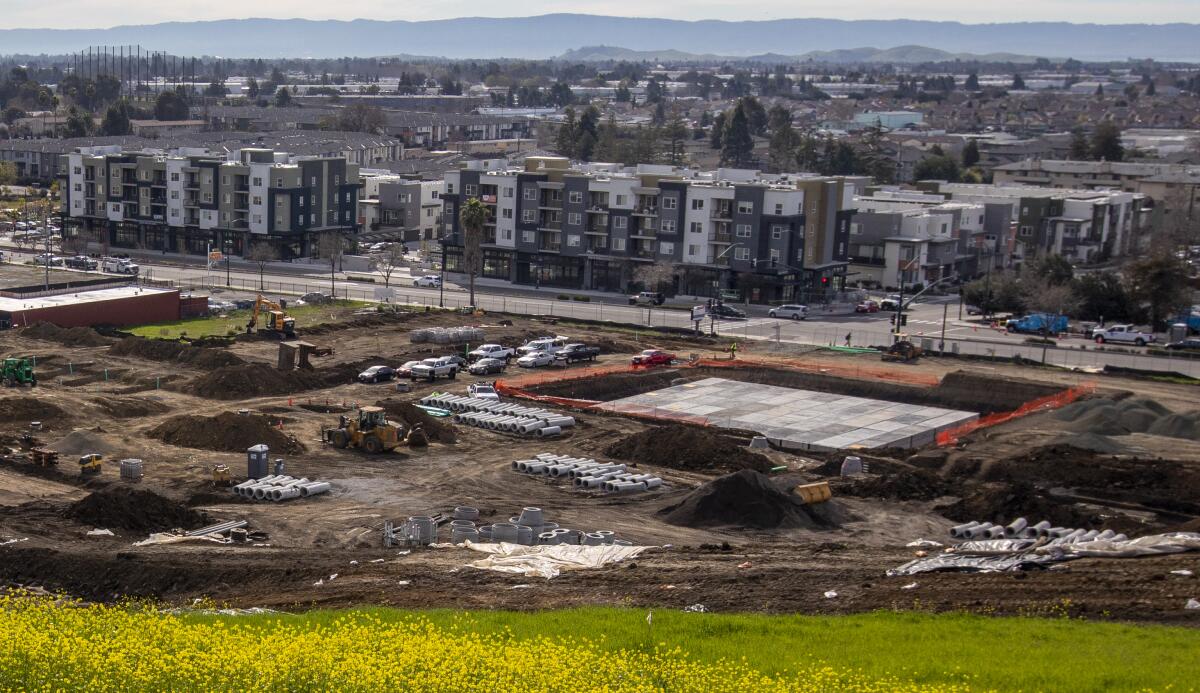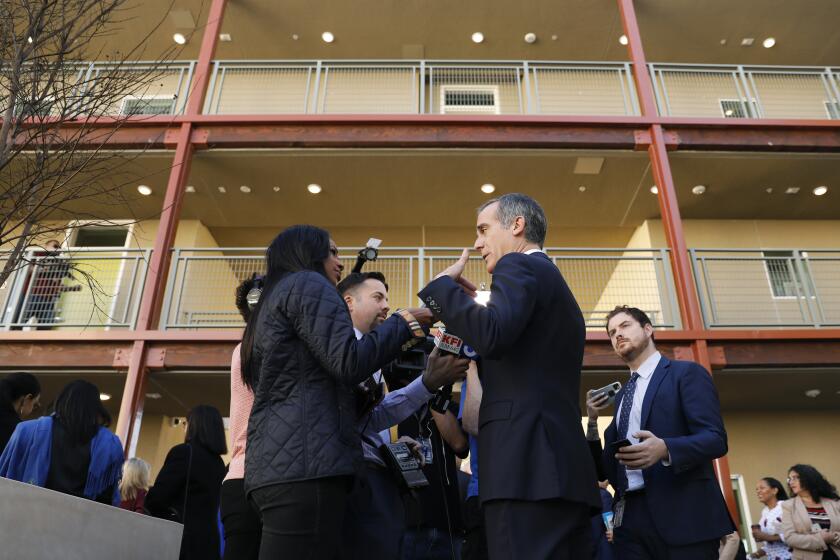Editorial: Speed up affordable housing development on government-owned land

- Share via
Shortly after he was inaugurated in 2019, Gov. Gavin Newsom signed an executive order meant to spur construction of affordable housing on state-owned land, saying that “the California dream is in peril if we don’t act to address this housing crisis.”
Three years later, a new audit shows that the effort has hardly been transformational. Officials reviewed 44,000 parcels owned by the state government and found 92 properties that were suitable for developing affordable housing. Of those, just 19 are in the process of being developed into about 1,700 homes that will be affordable to low-income and extremely low-income renters in regions including Los Angeles, Riverside and San Francisco. Construction on one project is scheduled to wrap up this year, but some others will not be complete until 2026.
It’s disappointing that this effort has not yielded more results, because California desperately needs more affordable housing. More than half of adults in the state said in a recent survey that they are concerned about not having enough money to pay their rent or mortgage, with 1 in 4 saying they are “very concerned.” Last year, some 1.4 million low-income families in California were unable to access affordable housing, the auditor wrote, noting that “the state’s need for affordable housing is significantly outpacing its production.”
The survey found that nearly 55% of Californians were concerned about being able to pay their rents or mortgages, with 26% very concerned.
But there is good news in the audit as well: It offers California a road map for how to more efficiently turn unused government property into desperately needed homes. The auditor estimates that an additional 30,000 affordable homes could be built on state property that’s already been identified, and says dozens of other parcels may also be viable for development if the Newsom administration can coordinate with the state’s two public university systems and the courts, which it does not directly control. This isn’t nearly enough to solve California’s housing shortage, but it’s a significant step in that direction, and the state needs to embrace every solution to this dire problem. Newsom’s administration and the Legislature must act with haste to implement the auditor’s recommendations.
To begin with, state officials need to follow up with state government agencies that did not participate in the initial assessment of unused land: the public universities and the courts, which own a combined 65 properties that are potentially viable for development, the audit says. State officials didn’t include them in the analysis they did in response to Newsom’s order because they’re not under the governor’s control. But the auditor contacted the universities and the judicial council and said they are open to working with the state to convert unused property into housing.
The Department of General Services, the agency that manages state property, should also hire more staff to speed up the conversion of vacant lots into affordable homes, the auditor recommends. Hiring just one more person would shave about two years off the process and get the remaining parcels into development contracts within five years.
And the Legislature should pass a law that makes the spirit of Newsom’s order continue no matter who becomes governor, by requiring the state to evaluate unused government property for affordable housing development every four years.
Advocates need money to fund a campaign to repeal a provision in California’s Constitution that makes it harder to build affordable housing.
Newsom should also go beyond the audit’s recommendations by directing state officials to coordinate with cities, counties and school districts that own property that could be developed into housing, including, potentially, schools closed because of low enrollment. The state should ask them to prioritize their properties and evaluate whether it makes sense to buy some of these parcels from local governments and fold them into the state’s process for converting unused property into homes.
The shortage of housing means shelter is absurdly expensive for many Californians and completely out of reach for many others, as evidenced by the tents pitched on sidewalks, freeway underpasses and riverbanks around the state. Many factors contribute to the problem — including the high cost of construction, neighborhood objections to building and the drop in state funding for affordable housing development over the last decade — so it’s unrealistic to think there could be a single fix. But as part of the mix, California must get more aggressive about turning unused parking lots and vacant dirt piles into safe and affordable places where people can cook meals, sleep in safety and cuddle up on the couch. Homes.
More to Read
A cure for the common opinion
Get thought-provoking perspectives with our weekly newsletter.
You may occasionally receive promotional content from the Los Angeles Times.












